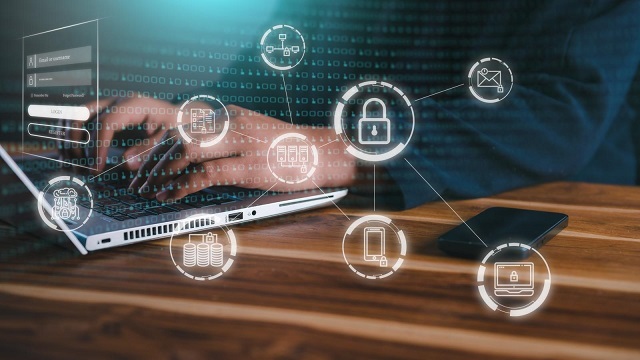The Future of Data Privacy: Trends to Watch
In recent years, data breaches have increased in frequency and sophistication which demands a need for more effective security measures. Data privacy ensure businesses meet legal obligations while building robust frameworks to protect sensitive data.
To stay updated, organizations should be knowledgeable and educated about the new data privacy laws and trends that will significantly impact data protection in the future.
In this article, we will explore the advancements in data privacy technologies and changes in data privacy laws.
Data Privacy and Its Importance
Data privacy gives individuals control over the sensitive data gathered about them and gives some visibility into that information. Businesses have used our crucial data in any way they see fit for far too long.
Companies must disclose personal data collection and use. Furthermore, they cannot share your crucial information with other firms for advertising and marketing without your consent.
Data abuse might lead to identity theft, fraud, or discrimination by organizations utilizing our data profiles. Data privacy laws make firms responsible for protecting personal data, honest about its usage, and honoring user privacy requests.
Distributing personal data is inevitable. Therefore, safeguarding personal data has become crucial for several reasons, including:
- Prevent fraud and theft
- Maintain customers’ trust
- Reduce annoying spams
- Ensure regulatory compliance
Top Data Privacy Trends in 2025
In 2025, several data privacy trends are influencing how individuals and organizations adopt this to protect their essential data in this growing cyberattack. Let us know these trends below:
1. Impact of emerging technologies
IoT and blockchain technologies can process large volumes of data to know the peculiar patterns that suggest a security concern and provide enhanced security and transparency for transactions.
However, as with all new technology, they also introduce new challenges and opportunities in data security and privacy. For instance, IoT devices expand the avenues through which data is collected and potentially compromised.
2. Increase regulations and compliance
Globally, governments continue to implement more stringent data privacy laws and regulations, including CPPA and GDPR. Business should improve more their compliance procedures to avoid severe damages to their brand.
The Rise of Global Privacy Policies: People are protected by these rules and have the right to view, change, or delete their personal information. A prominent law that got things going was the GDPR law from the European Union. It set a new data security around the world. People had more control over their private data.
Cross-border data transfers: Businesses must go through many more hoops to send and share data across countries because data can move freely between them. Standards for contractual terms and other mechanisms must be rock solid and follow each country’s data security rules.
3. Focus on User-Centric Privacy
Professionals predict a change towards a privacy strategy that prioritizes users. Companies will make it a top priority to give people more say over their data. Examples include making privacy settings readily available, allowing users to delete or transfer their data, and making permission processes as simple as possible.
According to user-centric privacy, individuals should have the last say in collecting, using, and sharing their data. Companies may increase trust and loyalty by making their processes more transparent and offering customers more agency. If this implemented to your business, customers will have a more positive experience and remain loyal to you.
4. Increased Use of Privacy-Enhancing Technologies
Privacy-Enhancing Technologies (or PETs) are getting popular as there is an increase in the need to maintain a balance between privacy and data utility. Businesses now understand the importance of using data to derive business insights but also recognize a need to provide security protection for individuals’ privacy.
With the integration of PETs in data processing procedures, organizations can guarantee the anonymization, encryption, and secure processing of personal data, which protects privacy while acquiring valuable insights.
5. AI and Machine Learning for Data Privacy
When protecting sensitive information, AI and ML are the way of the future. They are offering intelligent and automated solutions for ever-changing data privacy concerns.
AI changes the way data protection is achieved through the automation of processes and improved detection and prediction of risks. It automates security of sensitive data using AI-powered tools that encrypt, track data flows with minimal human intervention, and detect anomalies by monitoring network traffic, user activity, and data logs flagged as potential threats in real-time.
In addition, AI predicts vulnerabilities through past incidents for proactive adjustments of privacy policies. This way, with complex consumer rights and international data regulations, AI facilitates businesses to cope with compliance while protecting the data.
6. Rise in data privacy rights of consumers
The focus on data privacy worldwide has raised awareness of how crucial it is to uphold consumer rights, resulting in a complicated and changing regulatory environment. This change requires strict data security protocols and an ongoing data management and security practices review.
Big businesses, such as Apple, are helping raise awareness about data privacy by introducing tools that give customers more say over their data’s handling.
7. Strengthened Cybersecurity Measures
In 2025, businesses will implement a strong security protocols such as multi-factor authentication, data encryption and more. Important data should be protected from external threats through implementing cybersecurity measures. It is done by ensuring robust security controls, which will protect the organization’s personal information and prevent unauthorized access to or a data breach.
Employee training and awareness will also be more significant in reducing internal threats because human error and malicious intent can threaten data privacy.
Final Thoughts
Modern technology and innovations today are ever-changing and advancing and represent promising career opportunities for the immediate future and well beyond.
People must be educated and attentive to data-sharing policies. For enterprises, adopting privacy-centric policies and staying abreast of new trends will be essential for prospering in a more data-driven environment.
Adopting these new technology trends and predictions and developing pertinent skills will be essential to succeeding in the future job market and significantly contributing to the technology-driven world.


5 thoughts on “The Future of Data Privacy: Trends to Watch”